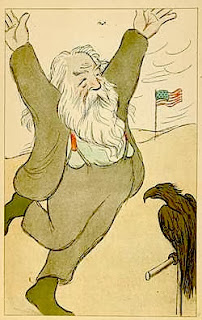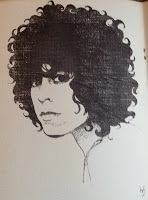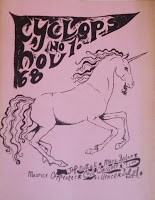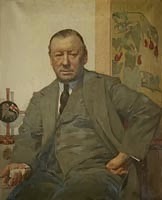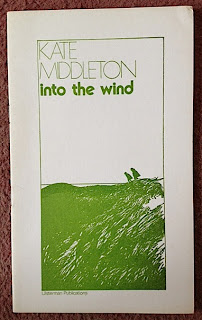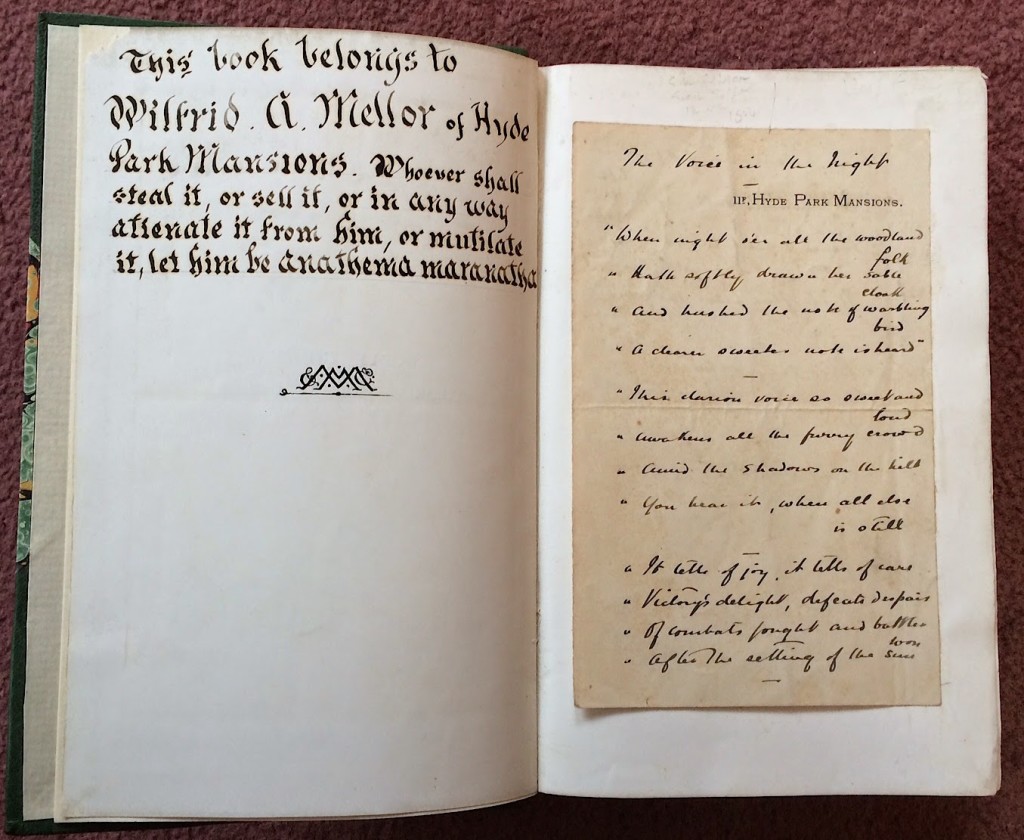
Found in an expensive leather bound book on golf courses from 1909 these tipped in poems. They appear to be the work of one Wilfrid A Mellor. The second poem about a cat is a sort of prequel to Eliot's Old Possum, not quite up there with Eliot but a bravura performance which we quote in its entirety:
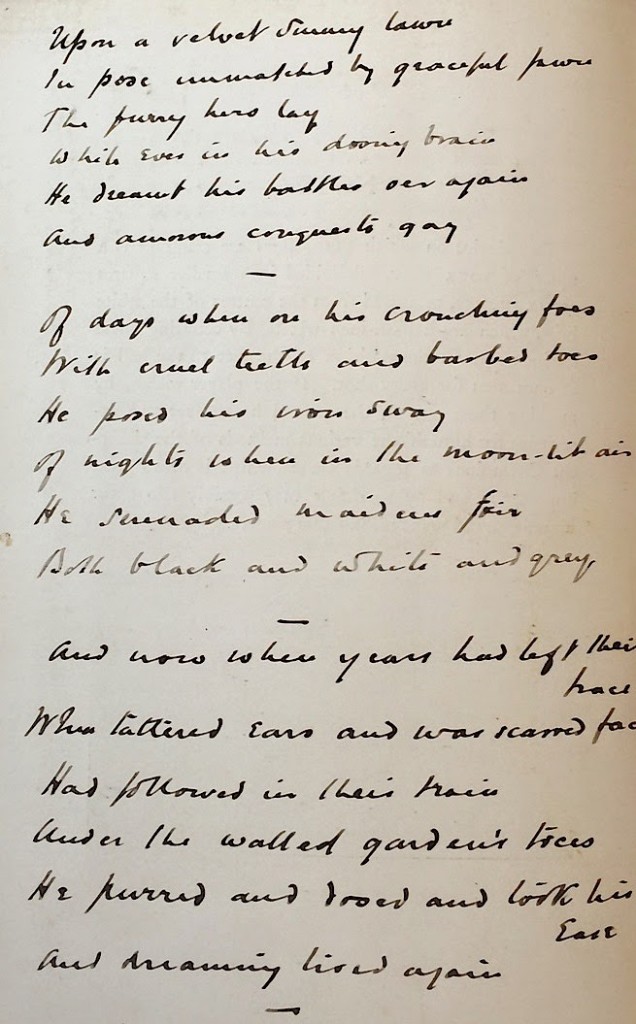
Upon a velvet sunny lawn
In pose unmatched by graceful fawn
The furry hero lay
While ever in his drowsing brain
He dreamt his battles o'er again
And amorous conquests gay
Of days when over his crouching foes
With cruel teeth and barbed toes
He posed his iron sway
Of nights when in the moon-lit air
He serenaded maiden fair
Both black and white and grey
And now when years had left their trace
When tattered ears and war scarred face
Had followed in their train
Under the walled gardens trees
He purred and dozed and took his ease
And dreaming lived again
Written in the front of the book are these words:'This book belongs to Wilfrid A Mellor of Hyde Park Mansions. Whoever shall steal it, or sell it, in any way alienate it from him, or mutilate it, let him be anathema maranatha.'
('Anathema maranatha' is from the Septuagint, the Greek version of the Old Testament and means 'Accursed (for) the Lord is Coming.') The other poem is less memorable but can be read by clicing on the image at the top. A search online reveals that a Wilfrid A Mellor was a solicitor from Downham Market, Norfolk. He is mentioned in the Police Gazette as attending various trials between 1895 and 1910. 11F Hyde Park Mansions may have been his pied a terre. The country address might explain the golf..














